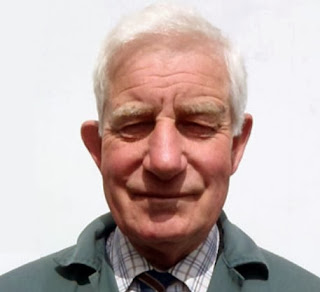The 21st century descendant of a
medieval monk has come face to face with his ancestor thanks to
researchers from Lancaster University.
The skull of a man buried at Norton
Priory in Cheshire was used in the facial reconstruction by forensic
artists Richard Neave and Denise Smith, responsible for the
reconstructions in the recent BBC series, Life and Death in Pompeii and
Herculaneum.
The skeleton is believed to be that of William Dutton, a man born into the important Dutton family who were benefactors of the Priory at the time, and who himself took monastic orders and became a canon at the priory.
Living relative Peter Moore Dutton from Shropshire, who has traced his family back to the original patrons of the Priory, sees some family resemblances.
He said: “He has the typical Dutton nose!”
The research into the man, who was at least 46 when he died, also shed light on what may have been a more eventful life than might have been suspected for a holy man.
A William Dutton from this period was accused of a number of thefts, of cattle and also of horses, carts and axes.
According to Dr William Cook of Lancaster University, this same William also appeared in court in 1307 for “ takinge away Matilda, one of the daughters and heyres of Richard Stockport… whence they tooke her out of her chamber into the Courte, & there stript her of all her cloathes but her smocke…”.
Did this William, later in his life, regret his crimes and take holy orders? Or was it another William Dutton, a parson of Thornton church who lived a less colourful life?
Whoever he was, his skeleton tells us that he clearly suffered from Paget’s disease and Diffuse Idiopathic Skeletal Hyperostosis (DISH).
Research is continuing into William and the many other fascinating individuals who once lived here.
Two PhD graduates in Medieval History, Dr William Cook and Dr Michele Moatt are working with the Trust’s Senior Keeper, Lynn Smith, and Director, Frank Hargrave, to research the backgrounds of key individuals in Norton’s history whose skeletal remains have been excavated at the Priory.
Lynn Smith, Senior Keeper at Norton Priory said: ‘We’re delighted that Lancaster University thanks to funding from the AHRC, is bringing all of these secret histories back to life. To be able to look into the eyes of someone who saw the grandeur and beauty of the 14th century Abbey at Norton is something very special.”
The research and facial reconstruction will all feature in Norton Priory’s Arts Council England funded £100,000 project, which includes multi-media guides, projections, film and more facial reconstructions.
 |
| Peter Moore Dutton (below) and his medieval ancestor William Dutton [Credit: Lancaster University] |
The skeleton is believed to be that of William Dutton, a man born into the important Dutton family who were benefactors of the Priory at the time, and who himself took monastic orders and became a canon at the priory.
Living relative Peter Moore Dutton from Shropshire, who has traced his family back to the original patrons of the Priory, sees some family resemblances.
He said: “He has the typical Dutton nose!”
The research into the man, who was at least 46 when he died, also shed light on what may have been a more eventful life than might have been suspected for a holy man.
A William Dutton from this period was accused of a number of thefts, of cattle and also of horses, carts and axes.
According to Dr William Cook of Lancaster University, this same William also appeared in court in 1307 for “ takinge away Matilda, one of the daughters and heyres of Richard Stockport… whence they tooke her out of her chamber into the Courte, & there stript her of all her cloathes but her smocke…”.
Did this William, later in his life, regret his crimes and take holy orders? Or was it another William Dutton, a parson of Thornton church who lived a less colourful life?
Whoever he was, his skeleton tells us that he clearly suffered from Paget’s disease and Diffuse Idiopathic Skeletal Hyperostosis (DISH).
Research is continuing into William and the many other fascinating individuals who once lived here.
Two PhD graduates in Medieval History, Dr William Cook and Dr Michele Moatt are working with the Trust’s Senior Keeper, Lynn Smith, and Director, Frank Hargrave, to research the backgrounds of key individuals in Norton’s history whose skeletal remains have been excavated at the Priory.
Lynn Smith, Senior Keeper at Norton Priory said: ‘We’re delighted that Lancaster University thanks to funding from the AHRC, is bringing all of these secret histories back to life. To be able to look into the eyes of someone who saw the grandeur and beauty of the 14th century Abbey at Norton is something very special.”
The research and facial reconstruction will all feature in Norton Priory’s Arts Council England funded £100,000 project, which includes multi-media guides, projections, film and more facial reconstructions.


No comments:
Post a Comment